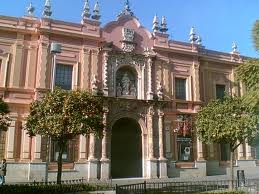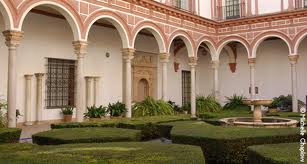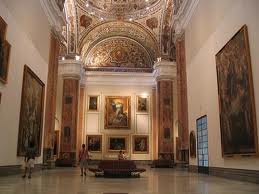Spanish Museums: Seville: Museum of Fine Arts of Seville

The Museum of Fine Arts of Seville (Museo de Bellas Artes de Sevilla) is a Spanish museum in the city of Seville which displays examples of Spanish visual art, dating from the Medieval period up until the art of the 20th Century. It pays particular attention to the Sevillan Golden Age which is considered to have taken place during the 17th Century and included artists such as Murillo, Francisco de Herrera and Zurbarán.
History
Like many museums set up during the 19th Century, the majority of the works in the collection were acquired during the confiscation period under the direction of Mendizábal. This period saw many paintings and sculptures taken from convents and monasteries that were being shut down. The museum was then set up with these works and with the help of a Royal decree in 1835, which stipulated that the museum should be a 'museum that displays paintings'.
The museum was set up in the 'plaza del museo' (Museum Square), in a building which had originally been used as an old Mudéjar style convent of the Order of the Blessed Virgin Mary of Mercy. The building was built in 1612 in the Mannerist style of architecture and was converted into a museum in 1839. The Museum of Fine Arts of Seville opened its doors to the public two years later, in 1841. Since its opening, the museum has undergone several modifications to ensure that its always kept in a good condition as well as moving with the times.
The Building
The original building that houses the Museum of Fine Arts of Seville was built in 1612, after the destruction of the old convent, which had been built in the Mudéjar style of architecture. In the 17th Century, the building underwent major restructuring undertaken by the Spanish architect and sculptor, Juan de Oviedo y de la Bandera. The new building was completed in an impressive Mannerist style with clear Andalusian elements.

The building was then cleared of the old religious order during the Confiscations of Mendizábal in 1835 which left the building empty and ready to be converted in the year of 1839, into the museum it is today.
The main facade and doorway of the museum comes from the original convent that was there before. The ceiling in one of the main rooms of the museum is also from the original convent. This ceiling is made up of many fantastic sections which contain images of the Virgin of Mercy, the founder of the original order who resided their, San Pedro Nolasco, and of King James I of Aragón.
The main structure of the building is based around three patios which are joined by a large staircase. There is also a church which is situated at the far end of the museum. The main entrance is decorated with different pieces of architecture taken from various convents in Seville.
The Collection

The original collection which came from the confiscations from convents, were as a result mostly Baroque religious paintings. However from the 20th Century onwards, the museum has been collecting more pieces of art and expanding the collection, as well as receiving many donations from private collectors.
Recently, artworks from the Andalusian government and contemporary artists have been the main source of the museum's increasing collection. It is for this reason that the Museum of Fine Arts of Seville has been rated the second best Spanish museum dedicated to painting, only beaten by the Prado Museum in Madrid.
The best section of artwork in the Museum of Fine Arts of Seville is the section devoted to the 17th Century Baroque painters from the area of Seville. Here you can find some of the most famous Baroque Spanish painters in history including Murillo, Velázquez and Zurbarán. Other famous artists on display in the museum include El Greco and Lucas Cranach.
